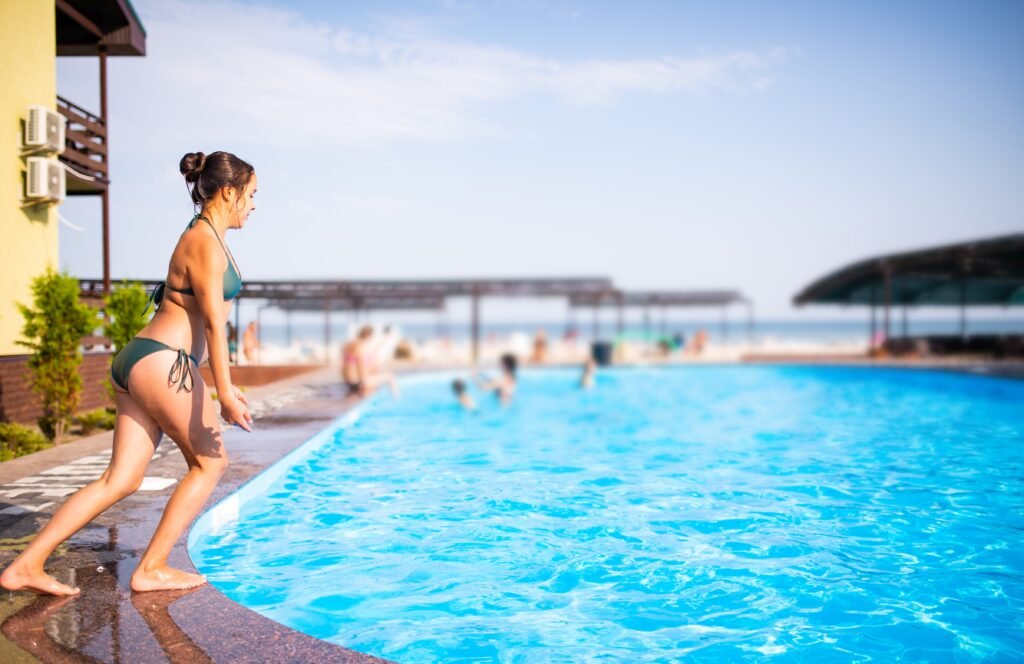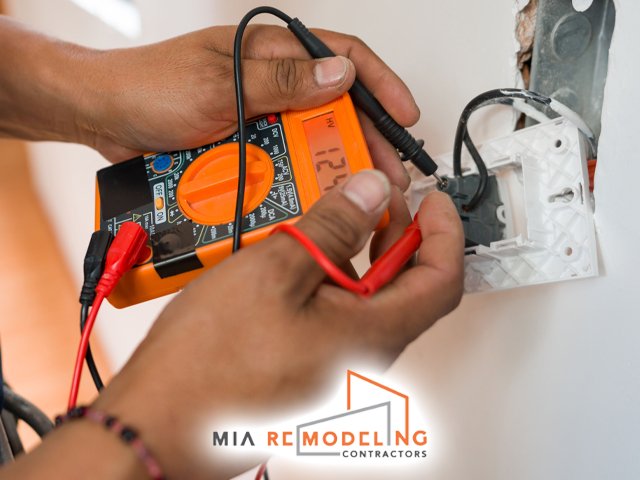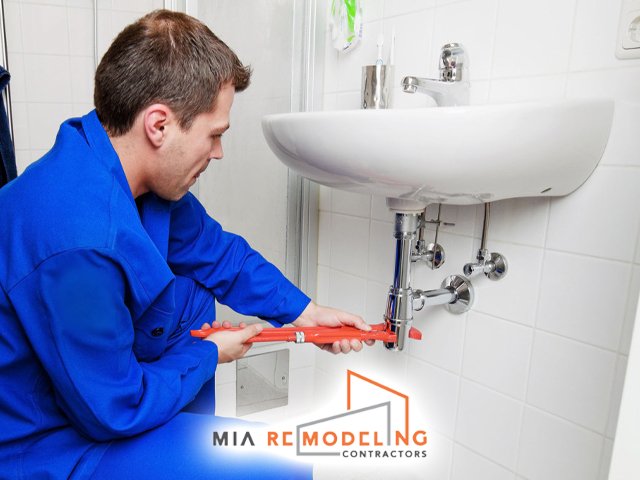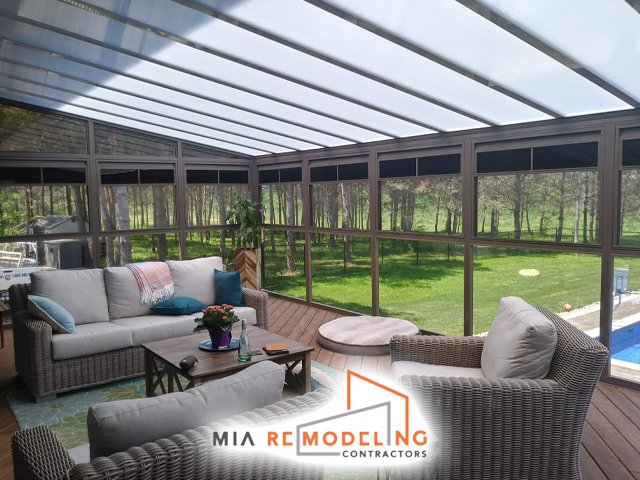Owning a pool in North Miami Beach is a bit like owning a convertible—you’ll be the talk of the block, but every now and then, you gotta give it a tune-up. If your pool’s surface looks rougher than your uncle’s beard or has left you with more scrapes than a game of backyard football, it might be time for a resurfacing. Nobody wants to show off a pool that’s seen better days—especially with Miami’s sunshine practically begging you to jump in. So, how do you know when your pool is asking for an upgrade? Let’s grab a towel, put on some flip-flops, and spot the seven big red flags that say your pool finish is worn thin.
1. Pitting—Those Tiny Craters in Your Pool
If you’ve ever walked into your pool and stubbed your toe on a spot that shouldn’t be there, you’ve probably noticed something called “pitting.” Imagine the moon’s surface, except wetter. Pitting happens when your pool’s finish wears out or gets attacked by chemicals and minerals. What starts small can turn into mini sinkholes that you feel every time you wade in for a dip. It only takes a few swim parties and cannonballs before pits get big enough to catch your eye (and maybe even your swimsuit).
Pitting is more than just an eyesore. These craters can mess with your feet, your pool brush, and your overall good vibes. If you ignore them, these spots can grow, letting water sneak under the shell and cause bigger headaches—think crumbling concrete or peeling plaster.

Why Does Pitting Happen?
You might ask, “Is my pool finish falling apart?” Sometimes, yes. Age is the biggest culprit. Pool finishes only last so long—sort of like your favorite flip-flops. Chemicals, unbalanced pH, and hard water also love to nibble at your pool shell. If you’ve noticed more pitting each year, there’s a good chance it’s time for repairs or a full resurfacing job.
2. Fading—Your Pool Finish Is Fading Fast
Remember when your pool was as blue as a Miami sky? If it’s looking more like a faded pair of jeans, that’s a sure sign your finish is throwing in the towel. Sunlight may be great for summer barbeques, but it’s rough on your pool’s looks. Sun’s UV rays can bleach out even the boldest colors, turning deep blues or gleaming whites into washed-out shadows.
If your pool looks tired and faded, don’t blame your sunglasses. This faded look doesn’t just affect the style. It can reveal that the protective layer of your pool is thinning. A fading finish often pairs up with other problems—think more stains, rougher texture, or splotches that just won’t go away with scrubbing.
Fading and Miami Weather: A Love-Hate Relationship
Living in Miami Beach means your pool gets more sun than a lizard on a hot rock. Over the years, that endless sunlight eats away at pigments and finishes. So if your pool looks like an old sidewalk chalk drawing after a rainstorm, guess what? The finish is probably spent.
3. Rough Patches That Feel Like Sandpaper
Ever gone for a swim and come out with scratches, scrapes, or a wild rash that leaves people wondering if you’ve been fighting raccoons? Your pool might be growing rough patches. If the once-smooth bottom now feels scratchy or gritty (and your kids start wearing swim shoes!), that’s your pool’s way of shouting for help.
Rough patches spring up when the top layer of your pool shell has eroded away. Sometimes, these can even snag swimsuits or pool toys. Think about how nice it is to sit on the edge with a cold drink; now imagine doing that on a gravel driveway. Not so relaxing, right?
Where Do Rough Patches Hide?
You’ll often find these use-unfriendly spots on steps, ledges, and areas around the deep end, where water flow is greatest. These rough areas aren’t just uncomfortable—they can also be dangerous. You wouldn’t send your kids diving onto rocks, so don’t let them boogie board on a pool bottom full of grit.
4. Stains That Just Won’t Budge
Stains in your pool can be as stubborn as a teenager on a Saturday morning. You scrub, you brush, you even threaten to call the pool guy, and nothing seems to lift these blotches. Stubborn stains—brown, green, black, or multicolored—pop up for a handful of reasons. Minerals, algae, metals, and even falling leaves can leave their mark.
What’s worse, old pool finishes soak up stains like a white shirt soaks up spilled ketchup. When you resurface your pool, you get a shiny new top layer that shrugs off stains with much less effort.
What Kinds of Stains Should I Watch For?
If your pool’s finish is chalky with white or gray scaling; if rust-colored spots keep spreading; or if you notice any weird color changes after storms, your pool’s finish might be waving the white flag. These stains can make your pool look swampy, even if the water is clean as a whistle.
5. Patches of Plaster Coming Off or Flaking
It starts small: a little area where the pool plaster looks like it’s peeling the way sunburnt skin does after a day on Haulover Beach. But then, those small chips grow into gaping patches where concrete is exposed. Plaster, aggregate, or even newer pool finishes can start to break loose, leaving rough patches all over your pool’s surface.
This isn’t just a matter of looks—those missing patches turn into real trouble fast. With the finish flaking, water seeps into places it’s not welcome. Moisture starts nibbling away at the structural parts of your pool, leading to concrete that crumbles faster than a cookie in warm milk.
Why Do Finishes Flake Off?
Over time, chemical imbalances eat up at the finish from the inside. Add in years of use, sun, and shifting Miami weather, and you’ve got a recipe for peeling. If you spot sections where the finish is lifting away, it’s time to call in the experts before things get worse.
6. Leaks and Lower Water Level
Pools shouldn’t have you playing “Guess the Water Line” every morning. If you’re constantly grabbing the hose to top off your pool, you might have a finish so worn out that it’s leaking. Cracks and holes in the pool’s finish are great escape routes for water—think of them like Miami traffic jams, only smaller.
Don’t blame evaporation right away. Miami weather can soak up a little, sure, but when you constantly lose inches of water, it’s probably not the sun’s fault. A worn finish gives water new paths to travel through hairline cracks that grow with time.
Pool Leaks: What’s At Stake?
A leaky pool doesn’t just waste water (and your patience). Lost water can damage the ground around your pool, cause underground erosion, and even create bigger breaks. Not to mention, you’ll be shelling out more for water bills. If you see puddles around the pool yard, spy cracks in the shell, or hear bubbling noises, resurfacing may be the only way to stop the leak.
7. Loss of Smoothness and Shine
You know how a brand-new car has that sparkle? A once-resurfaced pool starts out glossy and smooth. Over years, the surface becomes flat, dull, and sometimes even chalky. Walking across the pool floor feels like trekking on old sidewalk, not an inviting luxury.
The loss of smoothness happens with age. Years of chlorine, sun, salt, and feet take away the shine. If you notice the pool doesn’t clean up as easily, or that grime sticks to the surface no matter what, it’s because the finish has lost its polish. Shiny finishes look better, resist algae and stains, and feel amazing under your feet.
When Should I Worry?
If you’ve cleaned your pool more times than you’ve mowed your lawn but it still looks dull, your finish needs some love. This is the perfect time for resurfacing—one fresh coat and your pool wows your buddies at the next barbecue.
Why North Miami Beach Pools Need Attention
Living in North Miami Beach is a dream for anyone with a pool, but owning a pool here means you’re always at war with the elements. Long, sunny days, salt air drifting in, and the occasional crazy rainstorm all put your pool finish to the test.
Pool surfaces in Miami Beach work harder than pool shells up north. The humidity invites algae for a visit, the sun bleaches out the color, and the salt sneaks in from every heavy wind. Throw in a few wild pool parties, and your pool shell is working overtime.
Regular pool resurfacing isn’t only about looks. It protects your backyard’s main attraction from bigger problems. Think of resurfacing like giving your pool a fresh suit—it’s stylish, comfortable, and keeps everything safe underneath.
Pool Resurfacing Options in North Miami Beach
Feeling those rough spots, seeing those faded colors, or dealing with stubborn stains? Resurfacing your pool is easier than fighting off a pack of raccoons trying to steal your hotdog buns. Here’s a quick look at what you can do:
- Plaster Resurfacing: Good for folks who want classic, smooth, white or colored finishes. It’s like getting a new paint job for your pool.
- Aggregate Finishes (Pebble or Quartz): Think fancy, long-lasting, and a bit more texture. These finishes can last far longer and handle Florida’s heat without flinching.
- Tile: Tile is tough, beautiful, and resists stains. It’s the high-end choice, kind of like putting a shiny grill on your pick-up truck.
No matter the finish you pick, resurfacing fixes rough patches, fills in pits, covers stains, and keeps water from sneaking out. Plus, it makes your pool look brand new—so your buddies will ask, “Did you get a new pool?”
How to Know Your Pool Needs a New Finish—Final Checklist:
- Are there little pits that catch your feet (or pool brush)?
- Is the color faded, spotty, or just plain boring?
- Do you feel sandpaper patches on the steps, walls, or floor?
- Are stains popping up and refusing to come off?
- Is finish peeling or patches of concrete showing?
- Are you losing water without splashing or evaporation to blame?
- Does your pool seem dull, tired, or impossible to clean?
If you’re nodding your head to any of these, your pool is ready for a lift.
Common Questions from North Miami Beach Pool Owners
“Can I just patch the ugly spots?”
Patching can help for a little while—like using duct tape on your favorite pool float. But patches don’t last, especially with Miami’s tough climate. Resurfacing fixes the whole surface so problems don’t come back a month later.
“How often should I resurface my pool?”
Most pool finishes last 7-15 years, depending on what you use and how well you treat it. That’s a big range—sort of like guessing how long your last lawn mower will last. If you stay on top of chemistry and cleaning, you might squeeze out even more years.
“Is resurfacing a big deal? Will I lose my pool for months?”
No need to cancel your next pool party! Most resurfacing jobs take 1-2 weeks (weather depending). You’ll be back to cannonball contests before you know it.
“What about rough spots—will they come back?”
If you get your pool properly resurfaced by pros, roughness won’t return anytime soon. Resurfacing gives you a thick, new layer, so you can enjoy smooth swims for years.
Why Call Mia Remodeling Contractors For Pool Resurfacing?
Don’t waste another summer slipping, sliding, and snagging your swimsuit on a tired pool shell. At Mia Remodeling Contractors, we’ve turned rough, faded pools into backyard beauties across Miami Beach. Our team uses the toughest materials, the best tools, and has the friendliest crew this side of the sandbar.
- Smooth, stain-resistant surfaces
- A color and style that matches your taste
- Fewer repairs and easier pool care
- A pool you’re proud to show off
Skip the frustration. Give your pool a fresh face and get back to enjoying every cannonball, splash, and lazy Sunday float.
Call Mia Remodeling Contractors at (954) 355-1520 or visit https://miaremodelingcontractors.com/ to schedule your free pool resurfacing estimate. With us, your pool will be the coolest spot in North Miami Beach.




